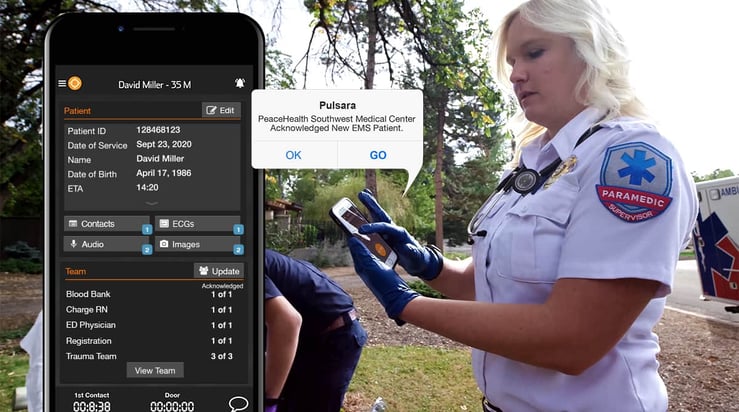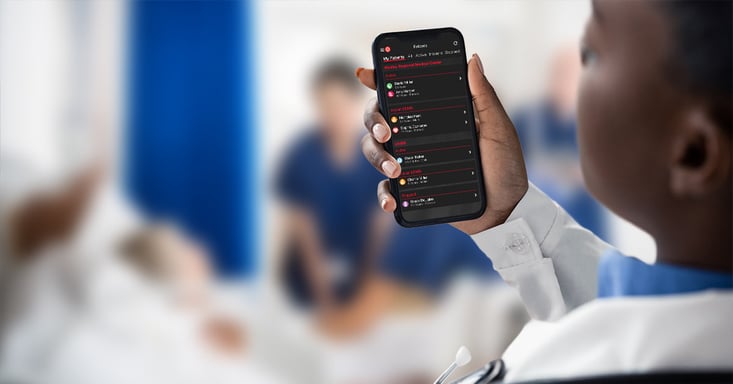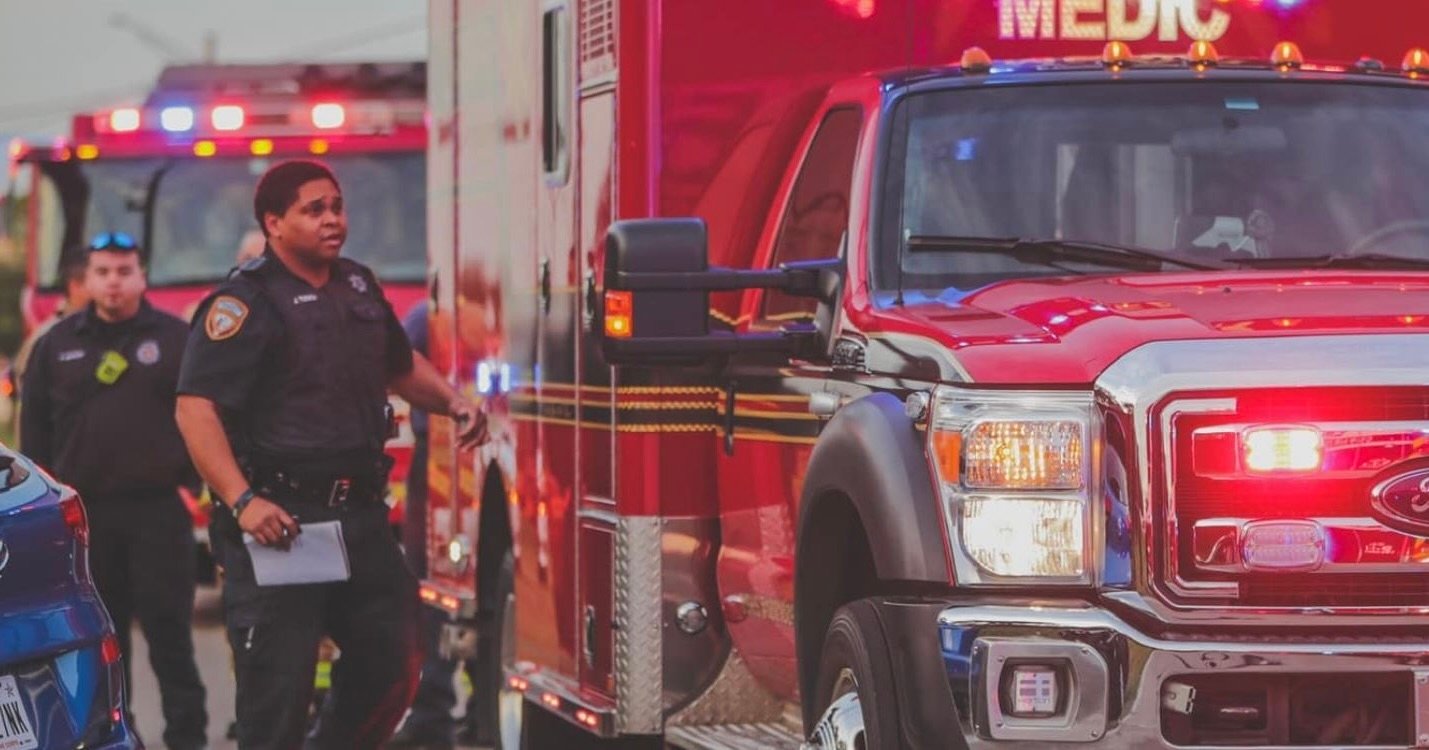Stop the Staffing Spiral: Burnout is Draining Your Workforce
Editor's Note: In July 2025, EMS1 and Fitch & Associates released their annual EMS trend survey, What Paramedics Want, proudly sponsored by Pulsara....

Editor's Note: The following post is adapted from a presentation Dr. James Woodson recently gave at the Arab Health Conference in Dubai on June 24th, 2021 entitled "Enabling Networked Communication: How Innovations in Mobile Technology Can Be Leveraged For Better Quality Of Care." Though the content was specifically tailored for conference attendees, the principles Dr. Woodson shares apply to healthcare systems worldwide. Watch the full presentation below, or check out Part 1 and Part 2 of our blog coverage.
If you're looking to build a communication and logistics system that can scale to meet your needs, you'll need a strong infrastructure built on the right kind of technology. There are many different types of solutions out there, from platforms that have been built specifically to cover certain parts of the care process to popular platforms that weren't even designed for healthcare at all.
So the key question is: What are the traits of a system that will scale to meet your needs, no matter what kind of situation is thrown at it?
As the founder and CEO of Pulsara, I've spent a lot of time researching, experimenting, and observing what works and what doesn't. Here are 8 things I've learned to look for in a communication and logistics solution that can meet your organization's needs, no matter the scale of the situation.
Many tools are designed to encourage the adoption of a specific device or piece of hardware. Often, these devices must be upgraded every few years. Ultimately, however, when progress is tied to a specific device, and does not integrate well with the current standard in technology, the platform is not scalable. These systems need to be built on an open platform. In order to efficiently aggregate all of these data points from different systems, we need to be open.
I personally believe that one of the most powerful tools that's been invented in healthcare is the tool we're all carrying around in our pockets right now: our smartphones. Rather than building a new technology that users will have to adapt to, we need to build these systems using common technology: common hardware that is ubiquitous and that everyone already carries in their pocket, and make sure that it's safe, private, and secure. When providers are already familiar with the technology and are comfortable using the interface, they will much more easily adopt the system as a natural part of their workflow.
Many organizations are considering adopting tools that are publicly available but aren't designed specifically for healthcare. Tools like these can be helpful for solving problems in parts of the process. In our experience, though, we've seen these types of systems fail over and over again because they aren't designed for healthcare workflows, they aren't flexible enough to accommodate a wide variety of needs, and they aren't able to create a shared consciousness around a patient event.

Designing a system to help communicate around time-sensitive emergencies is much different from the systems you might build around longitudinal care, outpatient care, or wellness. In emergent situations, you need to start, spin up a system, do your thing, and then you go back to business as usual, allowing care providers to view the case, play their part, and then exit stage left when the encounter is over—but still be able to watch the rest of the story play out from the sidelines. When you're implementing a communication and logistics system to help coordinate acute care, it is vital to build the system around the patient. The system needs to interrupt workflows in order to draw a clinician's attention to the patient's immediate needs.
There is certainly a place for solutions that are designed to be used just within one organization. However, that does not address the problem we're looking at today: scalability. A lot of systems are designed to be used intrafacility, so they don't possess the necessary specifications to facilitate the movement of information across organizations. Privacy and security laws inhibit the mobility of sensitive data across organizations, making it difficult for an intrafacility system to unite organizations. Too many complications surround who owns what data, and who gets to see what data. Any system you adopt will work best when it's designed specifically to work across organizations.
Though there is still a lot of anxiety across different regions about cloud-based technology, it is becoming more and more adopted. This is the future, and this is where the industry is going. Cloud-to-cloud integrations are the modern way to rapidly build these systems and quickly move data to where it needs to be. As such, I believe that looking for a cloud-based solution will be very important for staying with the technology in the coming years.

One of the first things that goes down in disasters in major stress events is communications. What happens then? Usually, everyone tends to fall back on their old way of doing things.
A system of care that scales is simply a system that helps you communicate and organize logistics for care, no matter how great or small the situation. The tool that you use to communicate for heart attack, stroke, trauma, routine transports, and routine 911 calls should be the same system you use to communicate about a disaster, an MCI, a pandemic, or even a load balancing crisis. That sort of daily practice helps develop muscle memory, which makes communication comfortable and efficient during a crisis. You need a system that works equally well for both and can scale up or down to meet the needs of each new situation you face.
Technology moves at breakneck speed, and while building your own system can be tempting, it's also very difficult to keep current and sustainable, especially across iOS and Android. In order to ensure reliability, you have to build your system to be backwards compatible across multiple different versions and operating systems.
Many organizations who want to build their own solution don't realize that by the time they've put together a budget, built the system, and distributed it to team members, half of the product is already outdated. That's the reality of technology. Make sure that you're plugging into an ecosystem that is able to take care of those things and understands how to keep everything up to date, compliant, and secure with the evolving mobile operating systems.
In order to do all the things listed above, your platform needs to be incredibly flexible. How do you ensure that your chosen system will be able to evolve along with your needs? Take a look at the kind of interactions it enables. Will it allow you to communicate across organizations? Does it offer a variety of features (such as group messaging, images, and live audio and video) that will allow your teams to adapt the system to their needs?
Systems of care that scale are the future of healthcare. When you look for a platform to simplify communication and coordinate the logistics of patient care for your organization, make sure to look for something that will meet your needs both now and in the future, as both technology and your organization continue to evolve.
Pulsara is helping with COVID-19 management by helping mitigate patient surge, streamlining patient transfers, minimizing exposure, and more. Learn more about COVID-19 + Pulsara here.

Editor's Note: In July 2025, EMS1 and Fitch & Associates released their annual EMS trend survey, What Paramedics Want, proudly sponsored by Pulsara....

A new research study, published in The Journal of the American College of Cardiology (JACC), shows the use of Pulsara in a STEMI-focused initiative...

Texas EMS Agency Slashes Hospital Offload Times For Low-Acuity Patients Down from 45 Minutes to 10.2 Minutes with Innovative Door-to-Lobby Protocol ...